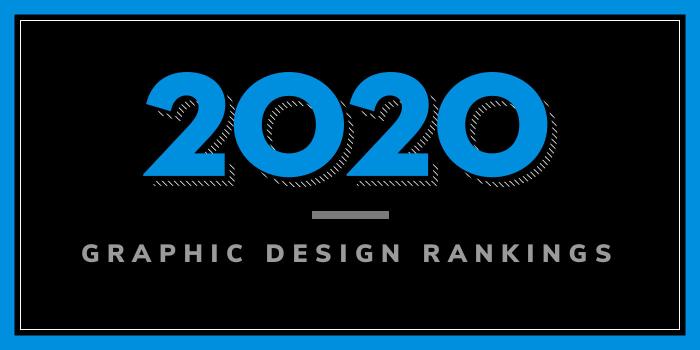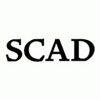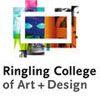

What are the top graphic design schools in the South for 2020?
| Ranking | School | State | Top % |
|---|---|---|---|
| 1 | Savannah College of Art and Design | Georgia | 1% |
| 2 | North Carolina State University at Raleigh | North Carolina | 2% |
| 3 | Ringling College of Art and Design | Florida | 2% |
| 4 | University of Georgia | Georgia | 3% |
| 5 | Auburn University | Alabama | 4% |
| 6 | Clemson University | South Carolina | 4% |
| 7 | Appalachian State University | North Carolina | 5% |
| 8 | University of Florida | Florida | 6% |
| 9 | Louisiana State University | Louisiana | 6% |
| 10 | University of Central Florida | Florida | 7% |
Our 2020 ranking of the Top 10 Graphic Design School Programs in the South. We considered over 150 southern colleges with graphic design programs for this year's rankings. For an explanation of our ranking criteria, click here.
We define the South as Florida, Georgia, Alabama, Louisiana, North Carolina, South Carolina, Kentucky, West Virginia, Tennessee, Mississippi, Arkansas.

Savannah College of Art and Design (SCAD) was founded in 1978. With campuses in Savannah, Atlanta, Hong Kong, and Lacoste, France, the school serves more than 14,000 students from all 50 states and more than 100 countries. Offering more art degree programs and specializations than any other art and design university, SCAD has plenty of opportunities to study at domestic and international locations. The school also offers more graphic design programs than just about any other school on our list. Options include BA, BFA, MA, and MFA degrees in Graphic Design and a Design Management MA. A Minor in Graphic Design is also available.
All programs highlight Product Packaging, Entrepreneurship, Mobile Technology, Interface Design and User Experience. Students have the opportunity to declare a double major in the areas of Advertising, Branded Entertainment, Illustration, Motion Media Design, Sequential Art and more. Students also have access to Minors such as Mobile and Interactive Design, and Advertising Copywriting. Students may complement their degree with a Certificate in Digital Publishing.
The BA degree is offered in Atlanta, Savannah and online and the BFA, MA, MFA, and Minor programs are offered in Atlanta, Hong Kong, Savannah, and online. The Certificate program is offered in Atlanta, Savannah, and online.
SCAD graduates are prepared to join elite agencies, multinational companies, or start their own businesses as they lead branding, visual marketing, interactive media, and immersive campaigns. Graduates work at top companies around the globe including Apple, IBM, Ralph Lauren, Under Armour, Verizon, and many others.

North Carolina State University (NC State) at Raleigh was established in 1887. The school serves 34,340 students enrolled in more than 300 degree programs across 12 colleges and 65 academic departments. The College of Design houses the Graphic Design program, which offers two degree paths—a Bachelor of Graphic Design and a Master of Graphic Design. The College has recently established a PhD in Design/Information Design Concentration as well.
The undergraduate and graduate degrees are NASAD (National Association of Schools of Art and Design) accredited and the PhD Concentration is set to receive NASAD approval after graduating its first class.
Students in the undergraduate program study comparative ideas about, and methods for, creating visual communication. Sequenced core studios, typography courses, and image-making courses “progressively introduce and develop skills, processes, and sensitivities across a range of media,” says the school. Graduate students will “closely examine the cultural and technological situatedness of graphic design and its products, and seek understanding of the people who use and interact with the things that graphic designers make.”
Students in all programs will explore and become proficient in a wide range of media — print, web, mobile, virtual reality, augmented reality, and embedded technology. Students will also practice visualization strategies such as mapping, diagramming, and storyboarding, they will develop strong formal and conceptualization skills through project-based assignments, and immerse in advanced studios that cover special topics such as data visualization, branding, and accessible design.
Another major highlight of the Graphic Design Program at NC State is the opportunity to gain valuable professional experience through paid internships within leading firms, and/or participate in sponsored studios as part of the graphic design curriculum. Students also have the opportunity to study abroad for a semester or summer at the NC State Prague Institute, or take advantage of other study abroad options.

Ringling College of Art and Design (RCAD) was established in 1931 by circus baron, art collector, and real estate developer John Ringling. A member of the only global association to serve art and design education research (Cumulus), RCAD opened with just 75 students and 111 course offerings. Today, the school serves more than 1,600 students enrolled in 13 BA and BFA degree programs and nine minors. Graphic Design, Computer Animation, Film, Game Art, Illustration, and Virtual Reality Development are just a few options.
RCAD programs offer a rigorous curriculum, which combines studio and liberal arts, with client projects, substantive internships, and national competitions. The school’s BFA in Graphic Design prepares students to design “show-stopping solutions for print and interactive media,” says RCAD. Launched in 1980, the program allows students to collaborate with other artists such as copywriters, printers, photographers, illustrators, and developers to “make their ideas a reality.” Course highlights include Design & Typography, New Media Design, Contemporary Design Culture, Interactive Design, Drawing & 2D Design, Drawing & 3D Design, and Visual Persuasion. For Course GDES 491, students have three options: Design Center, an Internship, or Graphic Design Elective.
RCAD internships have led to many full-time employment opportunities. Graduates have been hired by companies such as Google, Facebook, Adult Swim, CBS Interactive, ESPN, Apple iTunes, Leo Burnett, Microsoft, Yahoo!, American Greetings, IGN Entertainment, Wieden + Kennedy, Walt Disney Company, Birchbox, Inc. and many others.

Established in 1785, University of Georgia (UGA) serves 38,920 students enrolled in more than 370 fields and areas leading to the bachelor’s, master’s, specialist education, professional, or PhD degree. Programs are offered in 17 schools and colleges, including the Lamar Dodd School of Art—home of the Art Program. Options for aspiring graphic designers include a BFA in Art with Concentrations in Graphic Design, Printmaking & Book Arts, and ArtX: Expanded Forms. An Interdisciplinary Art & Design A.B. (BA), a Minor in Studio Art, and MFA degrees in ArtX and Printmaking are also on the menu.
The school says, “all BFA degrees include the Studio Art Core, comprised of a year-long survey of art history, introductory-level studio foundations, secondary-level ideation and methodologies, and upper-level interdisciplinary thematic studio and professional practice courses.” The Graphic Design pathway stresses “a strong grounding in design and communication fundamentals like typography, information hierarchy, concept development, and visual exploration.”
Students in this program can expect to take courses such as Graphic Systems, Type & Image, Visual Narrative Systems, Advanced Typography, Thematic Inquiry in Contemporary Art and Environmental Graphic Design. Electives include Data Visualization, Advanced Illustration, and Topics in Digital Platforms & Dynamic Media, to name a few.
Students seeking the BFA degree will enter the School of Art as Intended Art majors. “In most studio programs, students are required to present an exhibition or final portfolio that serves as a capstone experience before graduation, demonstrating their achievement in developing a mature and cohesive body of work.”
All art and design students have access to a large study abroad program that offers experiences on all seven continents and UGA campuses in Costa Rica, Central America, Cortona, Italy, and Oxford, England.

Established in 1856 as the East Alabama Male College, Auburn University serves a co-ed population of 30,460 students enrolled in more than 140 degree options across 13 colleges and schools. The College of Architecture, Design and Construction is home to in the School of Industrial + Graphic Design. Program offerings for aspiring graphic designers include a BFA in Graphic Design (BFA GDES).
The program emphasizes Fine Arts, Exhibitions, Identity Development, Logos, Visual/Digital Interface, Packaging, and Magazine Design. In addition, the school says, “students have excellent opportunities for internship and cooperative education experiences as a result of well established relationships with regional, national and international companies and firms.” Career opportunities range from “the development of strategies to implement large-scale communications campaigns, to the design of effective communication products such as magazines, logo and identity development, interactive media, web design, packaging, exhibitions, illustration, and environmental graphics.”
Auburn GDES is the only Graphic Design Program in Alabama to receive NASAD accreditation.

Founded in 1889, Clemson University serves nearly 26,000 students enrolled in more than 280 undergraduate majors, minors, and graduate programs in seven colleges. The College of Business, Department of Graphic Communications offers a BS in Graphic Communications that the school says is “dedicated to hands-on learning experiences.” Students in the program are “placed in positions in a variety of printing, packaging, publishing, imaging and related industries in management, marketing, sales, customer service, creative, technical and scientific positions.” The school says that placement rates are “consistently high” with “competitive salaries.”
In addition to engaging in hands-on learning experiences, Graphic Communications students will take courses such as Digital Imaging and eMedia, Packaging Science, Ink and Substrates, Package and Specialty Printing, Commercial Printing, Technical Writing, Current Developments and Trends in Graphic Communications, and Marketing. Graduates of the program are prepared to enter the schools MS in Graphic Communications or seek positions in printing management, production planning and supervision, commercial and technical sales, and many others.
The MS in Graphic Communications includes 33 credit hours of graduate courses for the non-thesis option or 30 hours with a thesis. Within the total requirements, at least 17 hours will be in GC technical/managerial courses; seven will be research related; six credits will be from outside the Graphic Communications Department; and at least one-half will be at or above the 8000 level.
Graduates of the program are placed in positions in a variety of printing, packaging, publishing, imaging and related industries in management, marketing, sales, customer service, creative, technical, scientific, and academic positions.

Appalachian State University was founded in 1899. The school serves approximately 19,280 students enrolled in more than 220 academic programs through the College of Arts and Sciences, College of Fine and Applied Arts, Reich College of Education, Walker College of Business, Hayes School of Music, Beaver College of Health Sciences, and Cratis D. Williams School of Graduate Studies. App State also offers a Doctorate of Education.
The College of Fine and Applied Arts houses the Department of Art, which offers several programs for aspiring graphic designers. Options include a BFA in Graphic Design and BS degrees in Graphic Communications Management – Cross Media Production (GCM – CMP) or Print/Packaging Production (GCM – PPP).
The program consists of 66 semester hours in Art Studio and related areas and 12 semester hours in Art History/Criticism and allows students to take a mix of both prescribed and elected courses in art, concentrating on individual strengths and interests. Sample courses for the program include Typography, Digital Imaging, Calligraphy, Interaction Design, Idea Lab, Motion Graphics, Sign, Symbol, Image, Design Methods, and Graphic Design Professional Practice.
Graduates of the BFA program “will be prepared to successfully contend for the rigorous and highly competitive careers in graphic design as well as for admittance into graduate level programs,” says the school.
The BS in GCM-CMP “focuses on applying graphic messaging across different channels/platforms such as web, email, print, cover wraps, etc. to communicate to various markets.” Sample courses include Digital Media Composition, Cross Media Production, Packaging Production, Web Development for Graphic Communications, and 3D Imaging and Animation. An industry internship is also part of the program.
The BS in GCM – PPP “covers a wide variety of processes and methods of production.” This includes flexography, digital printing systems, offset lithography, variable data printing and wide format printing “in addition to the design and production of packages that protect and promote products in channels of distribution.” Students in this program can expect to take many of the same courses required in the GCM – CMP program, as well as courses such as Advanced Packaging Production and Sustainability for Graphic Communication. This program also requires completion of an industry internship.

Founded in 1858 as Gainesville Academy, University of Florida (UF) serves more than 56,000 students enrolled in 30 certificate programs, 100 undergraduate majors and 200 graduate programs across more than a dozen colleges and schools. The College of the Arts houses the School of Art + Art History, which offers a BFA in Graphic Design, an MFA in Design and Visual Communications (MXD), and an Undergraduate Certificate in Graphic Design.
BFA students enjoy a “rich and intensive studio experience,” says the school, that allows them to “take art and design to the maximum depth possible in preparation to be an artist or designer, or to continue further study in art and design via a graduate program, or to even begin a career path directly related to the arts.” Students can choose from emphases in Ceramics, Art + Technology, Painting, Drawing, Printmaking, Sculpture, and Creative Photography.
The MFA has two- and three-year options that consist of 60 credits total (terminal degree). This includes 24 credits in graduate design courses (research seminars, studio and fieldwork practice), 15 credits of open elective, six credits of practicum, and 15 credits for the MFA project, which is self-directed and designed, allowing students to focus in any area of Design and Visual Communications.
When comparing the two- and three-year MFA options, the three-year option is for students funded with an assistantship or fellowship. Along with funding, the University of Florida provides tuition remission for nine credit hours per semester. The two-year option is for students who are self-funded or have other sources of funding and desire an accelerated path. Students should be mindful of the time commitment that four to five courses per semester and any part-time work will require.

Louisiana State University (LSU) was founded in 1853 under the name Louisiana State Seminary of Learning and Military Academy. The school serves approximately 31,761 students enrolled in more than 220 programs through over a dozen colleges and schools. The College of Art and Design houses the School of Art, which offers two programs for aspiring graphic designers: a BFA in Studio Art with a Concentration in Graphic Design and an MFA in Graphic Design.
The 120 credit hour BFA program helps students develop skills in typography, print and editorial design, information design, digital imaging and motion graphics, packaging, environmental design, identity design, and branding. Course highlights include Graphic Abstraction, Two-Dimensional Design, Three-Dimensional Design, Digital Art, Prepress Production Techniques, Interactive Multimedia Design, Digital Imaging Techniques, and Applied Typography.
Per the school, the 60 credit hour, three-year MFA program includes “research and discourse of both modernist and postmodernist methods, strategies, and analysis of the practice of design and their implementation to contemporary graphic design.” Students in the program will take 27 graduate studio hours, 12 art history hours, 12 studio art/general elective hours, and a three-hour teaching seminar.
Courses are supplemented by workshops and lectures by national and international visiting artists, scholars, and design professionals. The final year of study is “dedicated principally to the master’s thesis—submitted as a thesis report and exhibition, for which it is anticipated that students will make original and comprehensive student-directed research investigations in graphic communications.” The thesis is worth six credit hours.

Established in 1963, University of Central Florida (UCF) serves more than 69,000 students, making it the largest university by enrollment in Florida and one of the largest universities in the nation. The school, which has four campuses across Orlando and in Daytona Beach, offers around 225 degree programs across 13 colleges.
The College of Arts and Humanities at UCF houses the School of Visual Arts & Design (SVAD), which offers an Emerging Media BFA with a Graphic Design Track, an Emerging Media MFA with a Studio Art and the Computer Track, and a Minor in Studio Art. Students in the two-year cohort Graphic Design Track will “integrate the multiple domains of art, storytelling, and technology,” says the school. The program is designed to “provide a solid foundation in techniques and theory in one focused area of competence, as well as a broad understanding of related disciplines including arts, humanities, and technology. The program also offers extended experience in working in multidisciplinary teams on realistic problems.”
Students will master the skills needed to produce typographic and publication designs, identity systems, packaging, film and broadcast graphics, posters, as well as interactive and web design. “Throughout the program, students work on developing their professional portfolio, which culminates in the two senior year advanced Graphic Design courses.”
The Studio Art program allows students to specialize in related areas such as book arts, drawing, drawing and printmaking, drawing and illustration, photography, and type and design. Studio Art majors may pursue a BA or BFA.
The MFA is a three-year, 60 credit hour program that focuses on “the development of a concept driven body of related works vis sustained studio practice.” Students will study contemporary studio practices, such as performance art, installation, experimental time-based media, and fine arts. Graduates of the program will be “prepared to pursue active careers in the professional and academic arts. They will have developed a refined studio practice that provides them with the skills to find recognition and acclaim through presentations, exhibitions, conferences and performances in the contemporary art world,” says the school.
